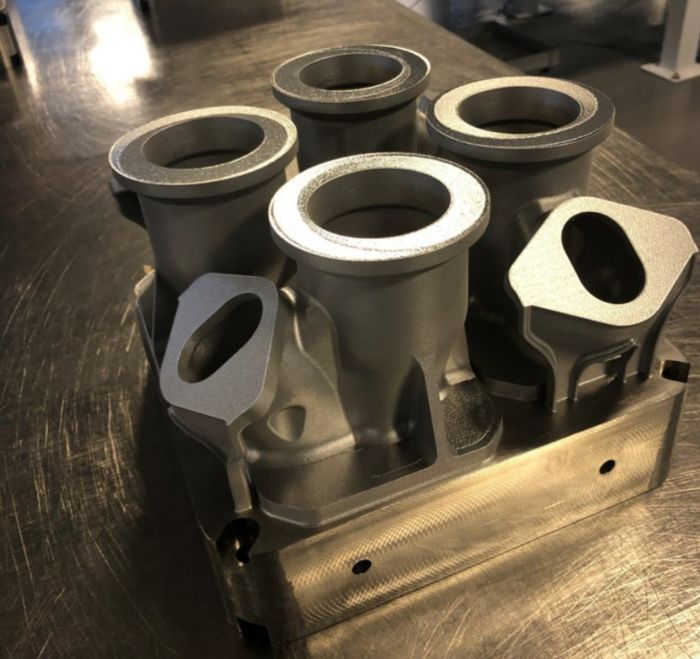GE Additive Switches Castings to Cost-Effective 3D-Printed Parts
May 17, 2021Comments
 A collaboration
between GE Aviation and GE Additive has resulted in a switch from investment-cast
turbine bleed-air parts to parts made via additive manufacturing (AM), with
cost savings expected to reach 35 percent. The conversion, a 10-month process
stretching from identifying target parts to 3D printing final prototypes,
compares to a casting process that takes 12 to 18 months or more, according to
GE Additive officials.
A collaboration
between GE Aviation and GE Additive has resulted in a switch from investment-cast
turbine bleed-air parts to parts made via additive manufacturing (AM), with
cost savings expected to reach 35 percent. The conversion, a 10-month process
stretching from identifying target parts to 3D printing final prototypes,
compares to a casting process that takes 12 to 18 months or more, according to
GE Additive officials.
“This is a game-changer,” says Eric Gatlin, AM leader at GE Aviation. “This is the first time we did a part-for-part replacement, and it was cheaper with AM than with casting. To ensure cost-competitiveness, four outside vendors quoted the parts and we still came in lower with AM.”
And, the project team reportedly has identified scores of other parts on a variety of engines that can be converted to AM with cost savings. GE Additive’s Concept Laser M2 Series 5 AM machine, with a 21,000-cm3 build chamber, offers a prime opportunity for such conversions, GE Additive officials claim. Its dual lasers melt and fuse metal layers quickly while producing consistent results for complex builds. The M2’s lasers, available in 400-W or 1-kW power, produce 50-micron-thick layers.
“(In this casting-to-AM project) we said up front that we were going to select a material that we already had qualified,” Gatlin says. “In production, we opted for the M2 because we know it well. And, we were not undertaking any wholesale design changes, just some tweaks to allow successful printing. We simplified as many steps as possible to allow the team to run fast.”
The project team developed final prototypes between April and September 2020. Although all four parts were slated for the LM9000, a land/marine turbine derived from the GE90 turbojet, which GE Aviation is building for Baker Hughes, the group also considered dozens of parts for older engines and products.







